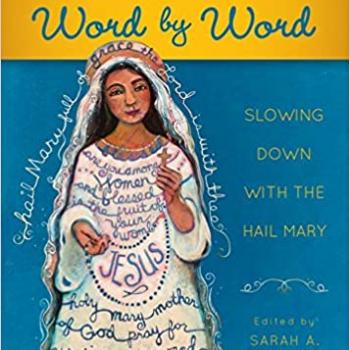Don’t let the headlines fool you, the freshly-released Final Report on the Apostolic Visitation of Institutes of Women Religious in the United States of America, 16.12.2014 is anything but glowing praise. It’s charitable and mannerly, but if you read closely and put on your thinking cap, the findings are harrowing. All the more so because our religious orders don’t exist in some bubble; every sister comes from a Catholic parish, and every sister in turn bestows her vocation on the Church. What the Vatican is saying about our religious orders is nothing short of an indictment of American Catholicism.
You can find the friendly stuff yourself, and there’s plenty of it. Who doesn’t have something good to say about the work of our religious sisters, brothers, priests, deacons, and laity? We aren’t a complete loss. We manage to do a few things right.
But let’s take off the optimist-filter and look frankly at the bad news, which I will translate from Diplomatese into “your overbearing Catholic mother who doesn’t mince words.”
Today, the median age of apostolic women religious in the United States is in the mid-to-late 70s.
. . . Many sisters expressed great concern during the Apostolic Visitation for the continuation of their charism and mission, because of the numerical decline in their membership.
Is this what your parish looks like, too? If your church isn’t moribund (or based in a retirement community, which will skew the numbers), what percentage of your high school graduates have actively discerned a religious vocation? What percentage move on to college or secular work without ever giving serious thought to the possibility that they might have a calling to consecrated life?
Currently, a significant number of religious institutes are expending considerable spiritual and material energies in the area of vocation promotion. While some of these have since shown an increase in the number of candidates entering and remaining, for many other institutes the results are not commensurate with the expectations and efforts. Some institutes reported that they have suspended vocation efforts for a variety of reasons, the most common being the declining membership and the ever-widening age gap between their current members and potential candidates.
The lack of interest in vocations is a longstanding problem. What many religious orders have been doing for the last thirty to fifty years simply is not the kind of thing young Catholics for the last thirty to fifty years have desired to devote their life to. No amount of PR can change that.
Vocation and formation personnel interviewed noted that candidates often desire the experience of living in formative communities and many wish to be externally recognizable as consecrated women. This is a particular challenge in institutes whose current lifestyle does not emphasize these aspects of religious life.
It turns out that if you want to live just like everyone in the secular world, you don’t need a religious order to help you do that. Young people show up at Church seeking Christ, not a stained-glass variation on the Elks club.
Many formators conveyed to the Visitator that candidates often have extensive professional backgrounds but less prior theological and spiritual formation.
Even the kids who are turning out at the religious orders don’t know jack about their faith. Catechesis is in a major crisis.
We ask the religious institutes to evaluate their initial and ongoing formation programs, assuring that they provide a solid theological, human, cultural, spiritual and pastoral preparation which pays special attention to the harmonious integration of all of these various aspects (cf. Vita Consecrata, 65).
Some of you religious orders aren’t helping. Get it together.
This Congregation asks the members of each institute to evaluate their actual practice of liturgical and common prayer. We ask them to discern what measures need to be taken to further foster the sisters’ intimate relationship with Christ and a healthy communal spirituality based on the Church’s sacramental life and sacred Scripture.
Lex orandi lex credendi. Some of y’all aren’t even praying like you ought. Straighten up and fly right.
The Church is continually challenged to a fresh understanding and experience of this mystical encounter. However, caution is to be taken not to displace Christ from the center of creation and of our faith. Truly, the Word of God is the one through whom the cosmos is created and sustained in being since “all things have been created through him and for him, and he is before all things, and in him all things have their being (cf. Col. 1:16f).
This Dicastery calls upon all religious institutes to carefully review their spiritual practices and ministry to assure that these are in harmony with Catholic teaching about God, creation, the Incarnation and the Redemption.
Could be because you don’t even believe the Catholic faith anymore. You need to fix that.
This Dicastery is well aware that the Apostolic Visitation was met with apprehension and suspicion by some women religious. This resulted in a refusal, on the part of some institutes, to collaborate fully in the process.
Catholics don’t trust each other. We have serious internal divisions that no amount of singing of “Gather Us In” and “All Are Welcome” can fix.
The Vatican’s report on American women religious does enumerate the tremendous amount of good we manage to do anyway, and it’s worth a read for that reminder alone. But it also underscores our enormous discipleship problem, which feeds and is fed by massive rifts in the Church. Don’t believe the headlines. All is not well, not for any of us.
Image: Franz Ludwig Herrmann [Public domain], via Wikimedia Commons













